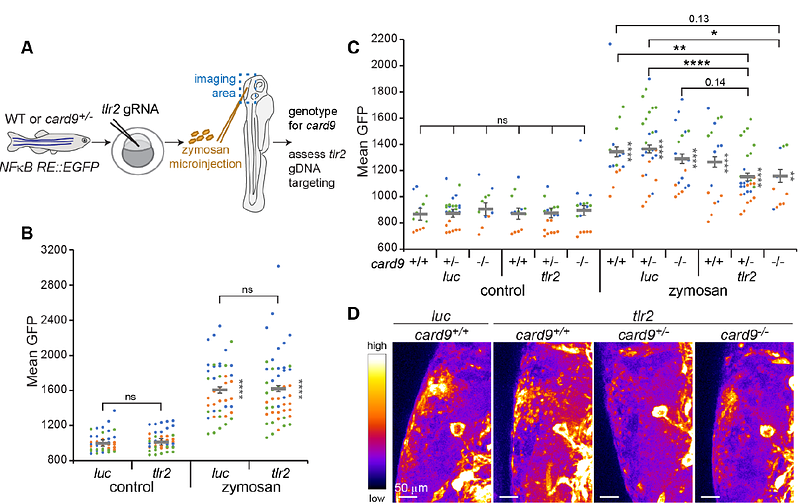Zebrafish use conserved CLR and TLR signaling pathways to respond to fungal PAMPs in zymosan

Zebrafish use conserved CLR and TLR signaling pathways to respond to fungal PAMPs in zymosan
Glass, E.; Robinson, S. L.; Rosowski, E. E.
AbstractPattern recognition receptors (PRRs) such as C-type lectin receptors (CLRs) and Toll-like receptors (TLRs) are used by hosts to recognize pathogen-associated molecular patterns (PAMPs) in microorganisms and to initiate innate immune responses. While PRRs exist across invertebrate and vertebrate species, the functional homology of many of these receptors is still unclear. In this study, we investigate the innate immune response of zebrafish larvae to zymosan, a {beta}-glucan-containing particle derived from fungal cell walls. Macrophages and neutrophils robustly respond to zymosan and are required for zymosan-induced activation of the NF-{kappa}B transcription factor. Full activation of NF-{kappa}B in response to zymosan depends on Card9/Syk and Myd88, conserved CLR and TLR adaptor proteins, respectively. Two putative CLRs, Clec4c and Sclra, are both required for maximal sensing of zymosan and NF-{kappa}B activation. Altogether, we identify conserved PRRs and PRR signaling pathways in larval zebrafish that promote recognition of fungal PAMPs. These results inform modeling of human fungal infections in zebrafish and increase our knowledge of the evolution and conservation of PRR pathways in vertebrates.


